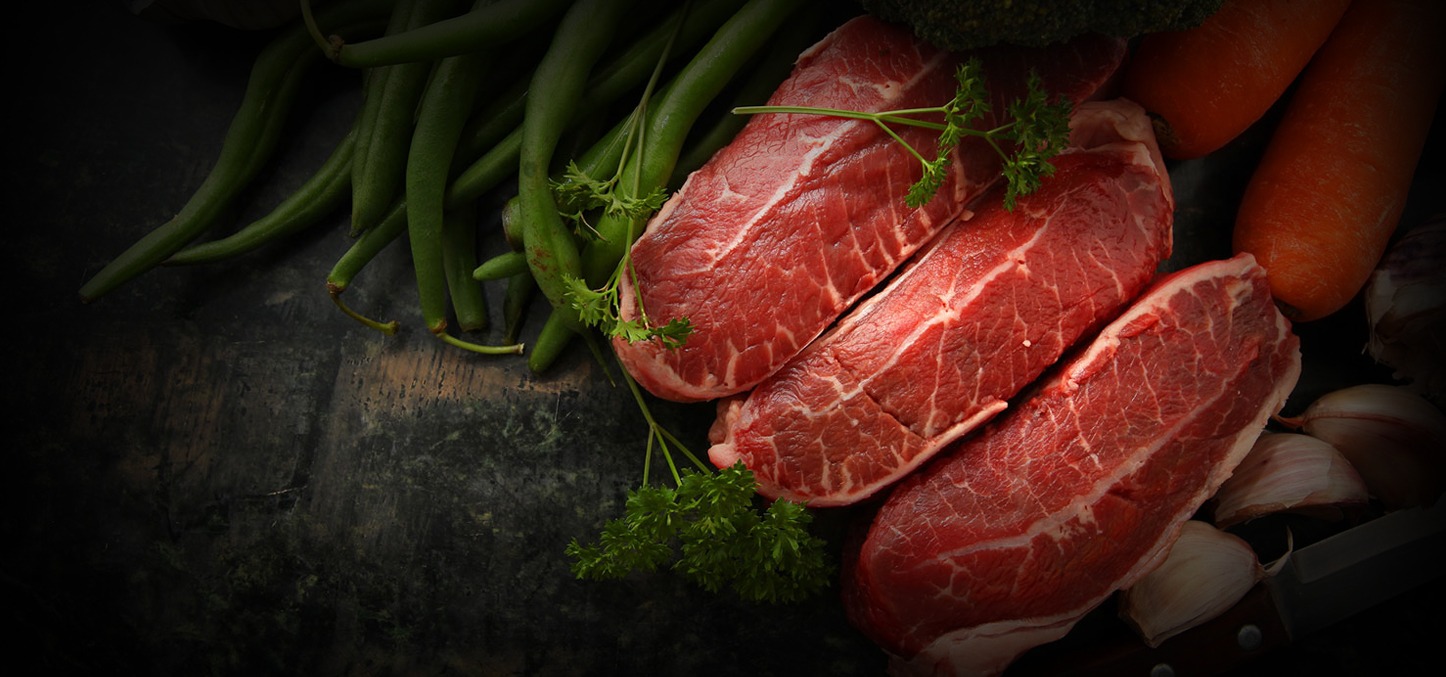All sounding a bit technical?
We’ve put together a handy glossary to ease you into the world of SEO. We hope you’ll find this an equally useful reference, whether you’re just getting started with us, or are still shopping around for an agency.
A
Page content that appears on the loaded web page, before the user scrolls.
This is an Open Source web framework that was created to speed up web page load times for mobile internet users.
An algorithm is a computer program. Search engines use a collection of algorithms to deliver ranked web pages to viewers via a results page. They rank pages based on a number of ranking factors and signals.
An anchor text is a text that is shown on a website for a given link. This text gives information to people and search engines about what the webpage or website being linked to is about.
A metric that is used by search engines to rank websites based on a combination of signals and popularity.
B
Backlinks are links from other domains/websites that lead to pages on your domain/website; connecting their website to yours.
When websites have been severely downgraded by search engines those websites are said to occupy a Bad Neighborhood.
Founded in January 2000 by Robin Li and Eric Xu, Baidu is the most popular search engine in China.
Launched in June 2009, Bing is the name of Microsoft’s search engine.
A website blocker is something that prevents search engines from accessing a website and browsing its contents.
A web publication or a website component that stores articles/content in chronological order. The content can be created by either an individual or a group and they usually reflect personal or corporate interests. Blogs are used heavily in SEO strategies.
A broken link is a link that does not lead to another website or webpage.
An online business directory is like a version of the Yellow Pages, but for websites found on the internet.
C
Caching is a technique that temporarily stores web content, such as images, in order to reduce future webpage loading times. A cached page is a copy of a web page’s visual appearance when it was lasted crawled by a search engine.
Click-through rate is the ratio of people who click on your website result link after your website shows up on an organic search that was done. You get this by dividing the number of people who clicked on your link by the number of impressions and then multiplying it by 100.
Competition is two-fold. Online competition when it comes to SEO is different from the regular open market competition that your company might face. SEO competition is determined by the companies who are competing for the same keywords as you are online.
This consists of text, images, videos, or sounds that convey information to an audience. This is used as an important ranking factor by Google and search engines tend to reward websites with better rankings and traffic when they contain valuable, credible, unique, and useful information that the audience engages with better.
A content gap analysis is when you use strategic tactics to analyze your website’s content and find where you can optimize it.
Content marketing is an area of online marketing where you target a certain group of people and try to spread awareness about certain products and brands among them by publishing content online.
Content Relevance is a metric that is used to gauge how relevant the content on a website is relative to a search term that they are trying to rank for.
A Conversion is an online marketing process that leads to a specific conclusion. This conclusion can be completing a purchase, filling out a form, downloading an item, adding items to a shopping cart, or subscribing to an email newsletter.
The Conversion Rate (usually expressed as a percentage) is the number of people who complete a specific action out of all the people who entered the website. You calculate it by dividing the total number of conversions by the number of people who accessed your website and then multiplying it by 100.
Cookies are small files or records that get saved on the local computer of a user when they browse the web. When the user visits a website again it is sent back to the server to notify that the user had visited the site before.
A crawler or a web crawler is a program used by search engines to go through websites to map out their page structure, pages, and their content and to collect.
D
A web link that does not lead to any other web page or object online.
De-indexing happens when Google removes a website or webpage be it either permanently or temporarily from their search index and subsequently from the search results as well. A webmaster can request Google to do this on a certain page manually as well.
A domain is a top-level web address that finishes with an extension like .com, .org, or .net.
Domain Authority refers to the online popularity of a website that it has achieved over a long period of time. These websites usually rank really high on search engine results and new web pages rank high very quickly, without even that content having earned links or engagement.
Duplication of content occurs when several web pages end up with either the same or very similar content. This could occur between websites as well web pages with the same website.
Dwell time is regarded as the time a user spends on a website, after clicking on a search engine result and then returns back to the search engine results. A low dwell time (usually less than 5 seconds) indicates to the search engine that the site might have low-quality/ less-engaging content.
E
Engagement is when a user interacts with your webpage and your web content. There are various engagement metrics that are used to measure these interactions. They include Conversion rate, Click-through rate, time on a website, bounce rate, etc.
Same as Outbound Link.
F
Featured snippets are highlighted text excerpts that usually appear at the top (typically above the organic results) of a Google search results page. They usually appear for certain queries which have questions (I.e. starting with what/how/why/who etc.) and contain a summarised answer for that specific query.
G
This is a Google service where you can pay Google to place your website links as adverts, above and in-between organic search results of keywords/queries that you want to rank for.
This is a Google service where you can pay Google to place your website links as adverts, above and in-between organic search results of keywords/queries that you want to rank for.
A web analytics tool provided by Google that can be used to track audience behavior, sources of traffic acquisition, landing pages, web sessions, content performance, etc.
The web crawlers that Google uses to locate and add new websites and webpages to its index.
Made by Google the Google Keyword Planner is a tool that advertisers can use as a part of its Google Ads program.
An Open-source tool created by Google to technically audit websites. It analyses aspects such as Performance, Accessibility, SEO, and best Web Development practices of a specific online URL.
Ever since mobile-friendliness was made a ranking factor by Google back in 2015, mobile optimization of websites became a priority factor in Google search algorithms. Google Mobile Updates are the updates done to the Google Algorithm to check this.
Released in 2013, the Hummingbird update was an adjustment of the Google Search algorithm. It was primarily used to better understand the complete meaning of queries (or semantic search) instead of just different keywords. The objective was to give better results to the audience.
The “Panda update” that first rolled out in 2011, was an adjustment of the Google Search algorithm. This was followed by a number of subsequent updates that were part of the package. Its intention was to reduce the ranking of websites with low-quality content usually created by content farms.
First launched in 2012, the Penguin update was a major change to the Google ranking algorithm and affected a lot of websites. The intention of the update was to reduce the ranking websites which used spammy tactics such as keyword stuffing or using a large number of low-quality backlinks in order to rank higher.
Google’s “Pigeon update” is a local search update that started rolling in the middle of May 2015. The objective was to increase the accuracy of local searches by using distance and location ranking parameters.
The Google Rankbrain is Google’s Machine Learning Algorithm that it incorporated into its search algorithm. It was launched in 2016 and is now said to be its 3rd highest ranked ranking signal.
The Google Search Console is Google’s free web analysis tool that can be used to monitor websites and check them for indexing and ranking errors.
This is a tool made by Google that you can use to explore new search trends on the internet using various visualization methods.
H
Headings or headline tags are used to separate the content of web pages into multiple sections. The hierarchy of headings flows from H1 all the way down to H6. Incorporating your target keywords into your headings has an advantage because web crawlers tend to give more priority to their content.
Hidden text was a technique that was used to manipulate search rankings by stuffing web pages with content-rich keywords that could not be seen by users. This method was severely punished by search engines and usually resulted in manual actions.
A web analytics tool provided by Google that can be used to track audience behavior, sources of traffic acquisition, landing pages, web sessions, content performance, etc.
This is a file found on the webserver that contains configuration data and can usually be used to manipulate the website’s URLs.
HTTPS stands for Hypertext Transfer Protocol Secure. This web protocol uses an SSL (Secure Socket Layer) to encrypt data that is being transferred between web browsers and websites. This is a security feature that now is an important Google Ranking Factor.
A web page or article that is regarded as a central resource with high authority, which is regularly updated and has a lot of inbound and outbound links linking to it.
I
An inbound link is a link to a website that comes from an external website.
An index or search engine index is a database used by search engines to record the information and page structures of the websites that their web crawlers had scoured during the crawling process.
This checks how easy it is for a search engine web crawler to crawl and index a webpage.
An indexed page is a web page that had been crawled by web crawlers and added to a search engine index. These pages will appear in search engine results when a person queries for content within it.
Internal links are hyperlinks that link to web pages within a website. Usually, the website’s home page contains the most amount of internal links.
J
A programming language that creates code segments that enables to insert content, metadata, or links into websites dynamically. These code segments can usually increase website load times.
K
Keywords are words and phrases that SEO experts target when making content for websites in order to get their websites/webpages to rank higher when users search for certain content. These optimizations help search engines to figure out if whether a certain webpage contains the information a user is searching for.
Keyword density is calculated by how often a search term appears in a text divided by the total number of words it contains multiplied by 100. In the early days of SEO, this was supposed to have a higher impact on search engine rankings but nowadays, not so much.
This is the process of finding out what sort of search terms, topics & subjects that people have searched for using search engines. This process includes finding out about the volume of such search terms as well as their competition levels online. This is important when making an SEO strategy for a certain website. There are plenty of free and paid tools online to use for this process.
This is the tactic of filling a web page’s content with keywords to unnatural levels and adding irrelevant keywords hoping that it might result in higher search engine rankings. This is a practice that is now penalized by Google and can result in a manual action.
L
A landing page is any page in a website that a user visits that leads to either the discovery or the exploration of the website. Sometimes there are specific pages that SEO experts use as landing pages which are used to capture leads and generate conversions.
A person or entity with the potential of acquiring a product or service through your website. Such a person usually willingly shares their personal contact information (such as an email address or contact number) with the hope of getting something of value back from your website.
A link is a connection between two online entities that can be used to navigate from one to the other. These play a vital part when search engines assess and rank websites.
Link building is the process of acquiring inbound links from relevant and trusted websites with the intention of improving your organic search rank and online visibility. There are various methods to achieve this. These include contacting other websites run by bloggers, webmasters, and media outlets, publishing high-quality content that will get you natural editorial links by other sites, establishing partnerships with other websites, or even buying links from others.
Link juice is a colloquial or slang used to describe (or even measure) how much of an advantage a backlink passes onto another site strengthening its backlink profile. This is typically known as Link Authority.
These keywords are longer than your typical keywords and are highly specific multi-word terms. They usually have fewer search volumes compared to other keywords and are easier to rank for because of the low competition.
M
A manual action is a penalty that Google slaps on websites. This usually happens after a human reviewer working for Google manually goes through a web page to see if it has violated the guidelines set by Google Webmasters. Once a manual action takes place a web page can drop drastically in search engine ranking or even be completely removed from Google search results. This can affect a single web page as well as an entire website.
This is a meta tag of information usually included in the header section of a web page and usually describes the content that can be found on that page. This element is not used directly for ranking algorithm processes but it appears within the description snippet that is displayed in search results. A good meta description can impress viewers and lead to a better click-through rate for your organic search results.
Meta tags are HTML code segments that contain information about a web page/website.
Usually referred to as Page Title is the main name of a webpage.
N
This is a meta tag used on outbound links to indicate to a web crawler not to crawl beyond this level. This is usually done when a website does not want to pass its link authority to another website through a link.
This is a meta tag embedded into a webpage that tells search engines not to index a particular page. This can be extended to multiple pages or even an entire website.
O
Offpage SEO optimization encompasses all activities which are done outside of a website in order to raise brand awareness and to create demand for one’s products and services. This usually consists of link-building, online marketing such as social media marketing, email marketing, influencer marketing, and even traditional marketing methods such as print, television & radio.
Onpage SEO optimization encompasses all activities which are done within a website in order to raise its search engine rankings. This includes publishing keyword-optimized, high-quality, relevant content within the website, Optimizing the HTML content structure, optimizing the URL structure of the website, and improving the website loading times.
This is a link on a webpage that directs visitors to a page on a different website, directing the user out of your website.
P
A part of Google’s search algorithm which ranks web pages based on the links incoming from other pages. Having more links will increase the rank but not all links have equal weight.
This is the amount of time that takes for a website to load. Page speed a Google ranking factor, that relates to user experience. The higher the page speed the higher your rank will be.
This is an online advertising method where advertisers are charged an amount of money every time a user clicks on that advert. Google Ads fall under this category. Combining PPC with good SEO can result in increased presence in the SERPs that will lead to more clicks & conversions.
R
The rank of your web page is decided by where it appears within the order of organic search results. This rank changes depending on the query used for the search.
Ranking factors refer to the different criteria that search engines use to evaluate web pages in order to rank them for different search engine queries. Google once said that it uses over 200 unique signals to rank websites. These factors are used to evaluate a website’s content, backlink profile, technical proficiency user signals, etc. A good understanding of these factors is crucial for creating a sound SEO strategy.
This refers to the potential that a website has to rank for certain keywords in search engine results using Search Engine Optimization.
Structured data can be added to a web page which will give contextual information about that page to the web crawlers. Search engines will then display this information when those pages show up on search engine results. These specially enhanced listings are called rich snippets.
Robots.txt file is a text file that is located on the website’s server containing information to web crawlers on which pages or components of the website should not be crawled.
S
Schema is a version of microdata that can be added to a web page and this will result in an enhanced description when being displayed on search engine results. This display version is what is known as Rich Snippets.
A search engine is a website on the internet that users can use to find content online through which users can search internet content. Search engines scour the web using web crawlers collecting information on websites and index them. They then analyze & evaluate those websites based on various ranking factors and rank them for different search queries that users will use to search for information. (Eg:- Google, Bing, Yahoo, Baidu)
This is when you pay search engines for placing ads for your website in certain search results.
Various different search engines have various different guidelines in place for websites to adhere to.
Search engine marketing is a process used to increase the presence of your website within search engine results. This can include organic methods as well as Search Engine Advertising.
This is the process of optimizing different aspects of your website so that it can reach a higher rank among the organic search results generated by search engines. To perform SEO you need to have a good understanding of how search engines work and what users search for online. Nowadays you need to be mindful to make your website attractive to both users as well as search engines. SEO splits into two major sections: on-page SEO and off-page SEO.
This is the webpage that a user will be directed to after they do an online search using a search engine. The object of SEO is to rank your website as high as possible on these pages.
A search term is what a user inserts into a search engine when they want to find information about a certain topic.
The sitemap.xml is an XML file that is saved on a website’s server and it lists all the web pages included.
Social signals are factors that determine how much a website’s content is popular on social media. This is calculated by looking at social shares. Google has stated very strongly that they do not use social signals as a ranking factor.
SSL(Secure Sockets Layer) Encryption or SSL Certificate is a digital certificate that is used to authenticate a website’s identity and encrypt information sent to its server.
T
Time on page is the time a user spends on a web page after entering it using search engine results before going back. A less amount of time usually means that the website is less engaging and does not contain the information that the user was looking for. This can lead to a decrease in search engine rankings.
This is an HTML meta tag that acts as the title of a webpage. Usually, search engines use the title tag as the search result title when displaying search results, so it should include the relevant keywords for that specific page.
U
This is an acronym for Uniform Resource Locator. This contains a specific string of characters that will lead to a specific resource location on the internet. In colloquial terms, this is what is known as the web address.
User experience (UX) is a phrase that is used to describe the overall feeling or experience a user has after interacting with a product or service. This can be both online or in the real physical world.
User intent or search intent is the goal or intention an internet user has when they enter a search query into a search engine.
V
This encompasses the reputation and ranking strength a website has when it comes to organic search engine rankings.
W
A specific location that exists on the internet that can be reached by using web browsers.
A collection of web pages hosted within a single domain on the internet.
Word count is the total number of words that are contained within the content of a web page. Having too little content (thin content) is taken as a signal by search engines that the content has a lower value.
X
This is a markup language similar to HTML used by search engines to read and understand the data within a website.











Socials